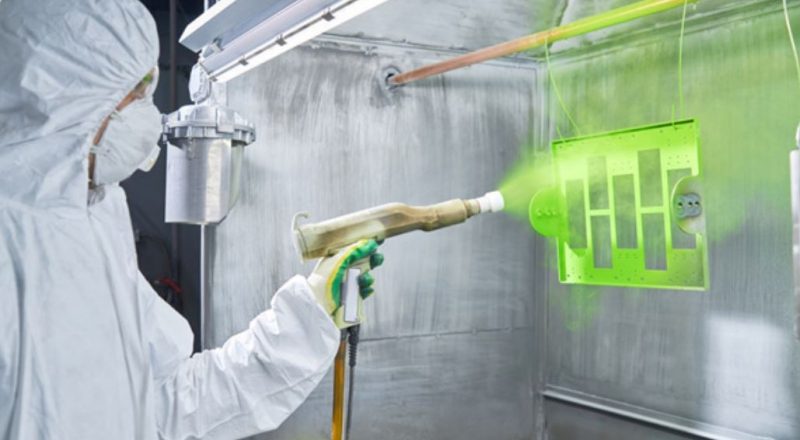Powder coating is a multi-step surface finishing technique that may be used on both metal and non-metal surfaces. It is a dry finishing method that uses powdered coating material instead of the liquid coating process, which uses a liquid coating solution. The powder is added to a substrate’s pretreatment surface, melted, then dried, and hardened into a protective coating during the process of powder coating.
There are three main steps involved:
- Preparation
- Coating application
- Heat curing
Let’s delve deeper to understand each step in detail.
The Preparation Stage
The surface must be cleaned and prepared before applying any powder coating material to ensure that the component is free of dust, grime, and debris. Oil, grease, solvent, and residue from the surface can be removed using weak alkalis and neutral detergents.
Surface debris, such as rust, scaling, existing finish, and so on, will almost always need the use of a blast chamber. A blast chamber is an enclosed space where abrasive material, such as sand, grit, or shot, is propelled against a surface by a pressured fluid, typically compressed air.
The Application Stage
The application process is partly determined by the kind of coating material chosen. Electrostatic deposition (ESD) and fluidized bed powder coating are the two most common powder coating technologies manufacturers, and finishing service providers use.
Electrostatic deposition (ESD) is used to apply coating material on metal parts. This process involves a Powder Coating Machine and components such as powder spray booths, powder feeders, electrostatic spray guns,
Unlike ESD, where the powder coating material is electrostatically sprayed and bonded to a surface, preheated pieces are dipped into the powder material inside a fluidized bed in a fluidized bed powder coating process.
The Curing Stage
ESD powder-coated parts need to be cured in a powder curing oven. While the cure timeline and temperature coated part is mostly dependent on its size, shape, and thickness, a curing oven operating between 350 and 450 degrees Fahrenheit will generally cure a specific part within ten minutes to over an hour.
Parts that are powder coated in a fluidized bed are heated in ovens similar to those used to cure ESD coated parts. In this case, the powder particles melt and flow together when they come into contact with the hot surface of the preheated part when it is submerged in the coating material.
Parts coated with an electrostatic fluidized bed may be preheated before being processed through the powder coating cloud or heated and cured in the oven after the coating has been applied, as with ESD coatings. Once the powder-coated item has cooled sufficiently to handle, it can be assembled, packed, and shipped to wherever it is required.
